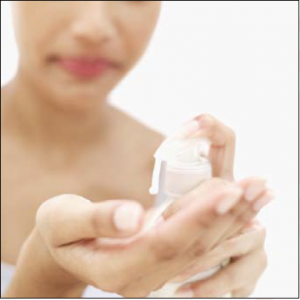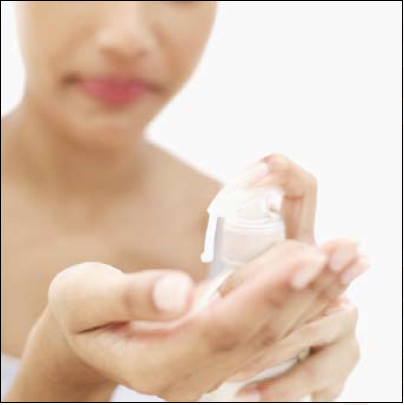41 from product labels identify the active ingredients of cleaning products used at home
Active Ingredients in Detergent | eHow Among the active ingredients of detergent soap are those categorized as surfactants. These ingredients remove dirt, oil and grease stains by a chemical action that takes place because of polarity (or magnetic attraction). Surfactants are composed of phospholipids, a class of fats that is attracted to water's polarity, and certain fatty acids ... Household Chemical Products & Health Risks - Cleveland Clinic The basic ingredients of window/glass cleaners are ammonia and isopropanol. These products may be irritating to the eyes, skin, nose, and throat. If swallowed, they may cause drowsiness, unconsciousness or death. Safety tips: Always wear gloves to use these products and use in a well-ventilated area.
S11-12PS-IIIi-j-31.ppt - PHYSICAL SCIENCE QUARTER 3 READ THE LABEL ... DEPARTMENT OF EDUCATION Pointers in Determining the Active Ingredient • The active ingredient can be classified as acidic, basic, or neutral. • The determination of its acidity or alkalinity often dictates how the product will work. • The active ingredient must always be labelled in consumer goods. 11 DEPARTMENT OF EDUCATION Example 12

From product labels identify the active ingredients of cleaning products used at home
Guidance for Industry, Q7A Good Manufacturing Practice ... Sep 24, 2001 · I. INTRODUCTION (1) A. Objective (1.1) This document is intended to provide guidance regarding good manufacturing practice (GMP) for the manufacturing of active pharmaceutical ingredients (APIs ... 14 Common Chemicals Used at Home - Compounds - Functions Here are more list of common chemicals used at home: 1. Monosodium glutamate. Monosodium glutamate is famous to be known as MSG in household. It is usually has a savory taste and be used as food preservative in stew and soup. Monosodium glutamate or sodium glutamate is composed by sodium salt and glutamate acid. Corporate Whitewash?: Why Do Cleaning Product-Makers Keep Most of Their ... For do-it-yourselfers, the Greener Choices website also lists recipes for eco- and health-friendly homemade household cleaners using ingredients like baking soda, borax, lemon juice and vinegar....
From product labels identify the active ingredients of cleaning products used at home. 15 best eco-friendly cleaning products, according to experts - NBC News ECOS Hypoallergenic Hand Soap. A variety of ECOS hand soaps meets the Safer Choice Standard, including its Lemongrass, Lavender, Orange Blossom and Free & Clear options. Its moisturizing formula ... Cleaning Chemical List - 14 Agents Used in Housekeeping When it comes to making products specifically meant for cleaning, the following chemicals are used. Some tackle odors, while some only remove dirt. Acetic Acid (also known as vinegar) Ammonia Sodium bicarbonate Carbon (iv)oxide Amyl nitrite Chromic acid Sodium perborate Tetrachloroethylene Trisodium Phosphate Sodium hypochlorite Cosmetics Labeling Guide | FDA A conventional ingredient declaration for each product in which the ingredients of each product are identified in descending order of predominance according to § 701.3(a) or, alternately ... Cleaning Products | Uses, Benefits, and Chemical Safety Facts There are many different types of ingredients used in cleaning products to help them perform. For example, you may see solvents like ethanol, or preservatives, or chlorine bleach listed in a cleaning product's ingredients. You can often find the ingredients listed on a product's ingredients label or packaging.
Chem 101: What you need to know about active ingredients - CleanLink Check the label or MSDS for specifics. In addition, housekeeping managers may look at product labels and find a variety of acids: boric acid, sulfuric acid, phosphoric acid and others. These chemicals can have a wide range of uses. Boric acid, for instance, is most often found in insecticides and baits. The Complete List of House Cleaning Supplies and Equipment Microfiber mop — This tool works for many types of hard surface flooring. Grout brush — These narrow brushes help you free grout lines of debris, resulting in longer-lasting grout. Rubber gloves —Protect your hands while cleaning, especially when using acid-based cleaners or if you suffer from skin sensitivity. About Cleaning Product Ingredients | The American ... - Cleaning Institute Each product formula is a careful balance of various ingredients that will work best for what you are trying to clean. For more information about the specific ingredients in a cleaning product, visit the manufacturer's website or look for the product in SmartLabel. Surfactants Builders Solvents Enzymes Fragrances Preservatives pH Adjusters 10 Household Products & Their Active Ingredients by sky lopez - Prezi 10 Household Products & Their Active Ingredients Baking Powder Active Ingredient: Sodium Bicarbonate Formula: NaHCO3 Purpose: Cooking- Releases CO2 Bleach Mouthwash Aleve Active Ingredient: Flouride Formula: F- Purpose: Protect against tooth decay Active Ingredient: Naproxen
Recalls & Public Health Alerts | Food Safety and Inspection ... Impacted Products • 7.5-oz. sealed plastic container packages containing “ATLANTIS FRESH MARKET Italian Style Wrap” with lot codes 22195, 22196, 22199 and 22200, and “Enjoy before” dates of 07/30/22. 07/31/22, 08/01/22, 08/02/22 and 08/03/22 represented on the label. • 7.5-oz. sealed plastic container packages containing “RACHAEL’S FOOD CORPORATION Italian Style Wrap” with ... Types of Cleaning Agents Used in Housekeeping | Polo & Tweed Below are some of the other substances you can find in abrasive cleaners. Aluminum oxide Calcium carbonate Calcite Feldspar Quartz Silica Whiting (powdered chalk) Caution when using abrasives Housekeepers should always read the labels on abrasive cleaning agents. To make sure they use the appropriate product for the cleaning task at hand. 26 chemicals used in daily life |Their chemical name and uses | Pure ... 14. Moth balls. C 6 H 4 C l2; 1,4-dichlorobenzene. Has a strong pungent smell and is used to kill clothes moths and fabric pests. 15. Chalk. CaCO 3; calcium carbonate. Uses incl. blackboard chalk, pavement (or, in USA, "sidewalk") chalk, gymnastics and rock-climbing, and sometimes in toothpaste. 16. Product Labels: How to Identify Chemicals and Other Ingredients - WebMD The Consumer Products Safety Commission regulates labeling for most hazardous household products. This includes cleaners, car wax, battery acid, drain opener, and the like. These products are...
Pesticide Labeling Questions & Answers | US EPA Oct 14, 2021 · If the new label cannot be printed in time to coincide with new production of the pesticide product and the production is within the 18-month time period, old labels may be used, however supplemental or sticker labeling bearing the newly approved labeling must be used after the 18-month date to bring the product into compliance.
Household Cleaning Products | Muncie Sanitary District The most common ingredients in household cleaning products include alkalies, acids, detergents, abrasives, sanitizers, and spirit solvents. Abrasives Abrasives are materials that wear off dirt by rubbing. Rottenstone, whiting, pumice, volcanic ash, quartz, marble, feldspar, and silica are prime examples of an abrasive.
Home Cleaning and Personal Care Products Guide Coco Butter is an emollient which means it has the quality of softening and smooths the skin. It contains a fatty acid which aids in retaining moisture and building elasticity. Jojoba oil is similar to the oil that is in our skin. It is light and silky and has a long shelf life.


Post a Comment for "41 from product labels identify the active ingredients of cleaning products used at home"